ESVI: Earth Science on Volcanic Islands
2019 Mentors
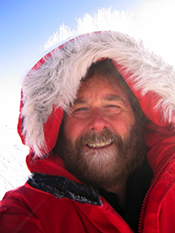
Rhett ButlerResearch FocusI am interested in a broad range of geophysical phenomena, including Hawaiian volcanos, the oceanic lithosphere, the inner-outer core boundary, tsunamis, and polar research. My favorite tool is seismology, which allows me to “see” directly into the Earth, and to pose and answer geophysical questions. Discovery is exciting! My current research includes the recent sequence of fifty magnitude 5 earthquakes associated with the Kīlauea summit collapse and cessation of lava, precursory seismic events at Kīlauea, seismoacoustic wave propagation at the seafloor of the world’s deepest seafloor observatory—SOEST’s Aloha Cabled Observatory—north of O‘ahu, and antipodal studies of Earth’s interior. Possible Project
|
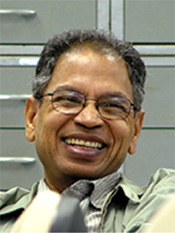
Aly El-KadiResearch FocusI am a Professor of hydrology, Department of Earth Sciences, and a Researcher at the Water Resources Research Center (WRRC). My research deals with aassessing effects of climate change and land-use practices on aquifer sustainability; watershed assessment and modeling; application and assessment of various types of groundwater models; analysis of dissolved helium transport in aquifers; modeling multiphase flow and transport of hydrocarbons; numerical modeling; flow and transport in field soils; databases and geographic information systems; bioremediation in tidal aquifers; contamination by agricultural, cesspool sources, and arsenic. Potential Project
|

Brian GlazerResearch InterestsSensors & Instrumentation for Coastal Oceanography DescriptionRecent technological innovations in consumer electronics have drastically reduced the cost of sensors that can be used for environmental monitoring, however, most of these advances have not yet been applied to aquatic sciences, and aquatic scientists have been forced to rely on expensive instruments developed for use by scientists with access to large research and development budgets. This has limited our understanding of dynamic, geographically complex ecosystems like the coastal zone. We have projects funded by the National Science Foundation, University of Hawaii, and the Schmidt Family Foundation to: (a) establish a pool of low-cost sensors and instrumentation based on small single-board computers (Raspberry Pi, Arduino), (b) provide biogeochemical expertise for student-led development of field-deployable sensor systems in nearshore and coral reef environments, (c) establish a coordinated monitoring program in nearshore Hawaii. For more information, visit grogdata.soest.hawaii.edu/project_info/. |
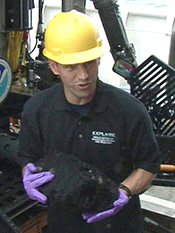
Jasper KonterResearch FocusMy research interests are in mantle geochemistry, and magmatic processes that shape oceanic volcanoes. The majority of my work focuses on the use of radiogenic (Pb, Sr, Nd, Hf) and stable (Fe) isotopes, as well as major and trace element abundances to look at the sources and processes that form volcanic rocks. In particular, I work on volcanic chains that occur in the middle of the tectonic plates (so-called hotspots), studying how the volcanoes are constructed, how they relate to the tectonic plates, and how they relate to the world-famous example of the Hawaiian Islands. Potential Projects
|
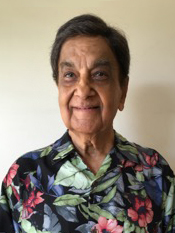
Murli H. ManghnaniResearch FocusMy research interests are in high pressure mineral physics. Specifically, I am interested in the physico-chemical and thermodynamic properties and the composition-structure-property systematics in Earth materials (like hydrous mantle minerals, core materials), ceramics (oxides, silicates and their polymorphs), thin films of hard materials, silicate glasses and melts, metals (Ti, Zr, Hf, V, Cr, Mo, and their alloys) and the Fe-Ni-S and Fe-Ni-Si melts under in-situ high pressure/temperature environments. Potential Project
|
Team Mentors: Garrett Apuzen-Ito and Niels Grobbe |
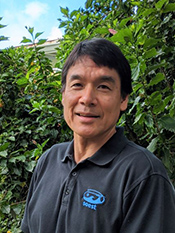
Garrett Apuzen-ItoResearch FocusMy students and I use computer simulations of solid and fluid mechanics to study mantle convection and melt generation beneath mid-ocean ridges as well as hotspot island chains like Hawai‘i. More recent studies include computational geophysical studies of lithosphere deformation and faulting at both divergent and convergent plate boundaries. Students who work with me have strengths in math and physics and are interested in computer modeling. Potential Projects (see also the Potential REU Projects PDF)
|

Niels GrobbeResearch FocusMy research interests and expertise include hydrogeophysics (imaging and understanding water in the subsurface: e.g. groundwater resources, flow paths, salt/fresh water interactions; geothermal resources; etc.), imaging, inverse problems, numerical modeling, multi-geophysical methods (e.g. active and passive seismics, electromagnetics, gravity), and coupled seismo-electromagnetic phenomena. In my research group, I always aim to combine theoretical and algorithmic development with field data and/or laboratory data. We have a wide-range of cutting-edge land geophysical equipment available, including seismic nodes (1C and 3C), nodal-based electrical resistivity tomography/induced polarization systems, magnetotellurics, self-potential systems, seismic sources, and gravity. Potential Projects
|
Team Mentors: Craig Glenn and Celia Smith |
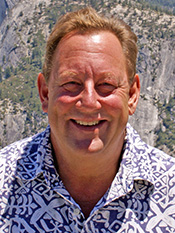
Craig GlennResearch FocusStreams, and groundwater (submarine groundwater discharge—SGD), can deliver large amounts of nutrients and other land-based contaminants to the coastal waters of Hawai‘i. We study these processes and we investigate the connections between differing types of land use and the flow of water and nutrient fluxes from land into our coastal marine environmental systems. Based on our work using aircraft, we use thermal infrared imaging from small remote-controlled “drones” to image, measure and differentiate the magnitude and dispersal of SGD and streams that enters into the ocean. We also use geochemistry and stable isotopes to determine the land sources from which those waters and their nutrients were derived. Our research is further directed at using stream flow measurements and groundwater modeling to quantify transport flow paths and water and nutrient discharge rates. This summer’s REU project will focus on areas of Waialua-Hale‘iwa on O‘ahu’s north shore. A major goal of this REU project is to understand how freshwater systems impact the health and sustainability of Hawai‘i’s coastal waters and ecosystems. Potential Projects
|
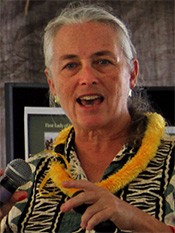
Celia SmithResearch FocusGenerally unseen and infrequently measured, submarine groundwater discharge (SGD) can transport large loads of nutrients and other land-based contaminants to the coastal waters of Hawai‘i. Working in collaboration with Dr. Glenn’s research group, we investigate the connections between differing types of land use, the flow of water, and finally the nutrient fluxes from land into the coastal ocean. As elevated nutrient flow to coastal settings can drive algal blooms that can degrade our coral reefs, we combine natural stable isotopes and nutrient geochemistry of both SGD and of marine plants to trace the origins of elevated nutrients, as well as assess the biological impacts on the marine plant community. Potential Project
|
2017 Mentors | 2018 Mentors | 2019 Mentors | 2020 Mentors | 2021 Mentors | 2022 Mentors | 2024 Mentors | 2025 Mentors
[ Top of page ]
